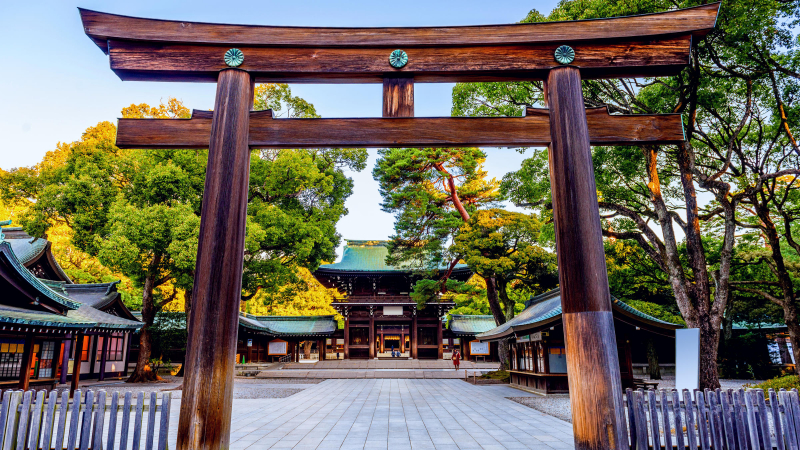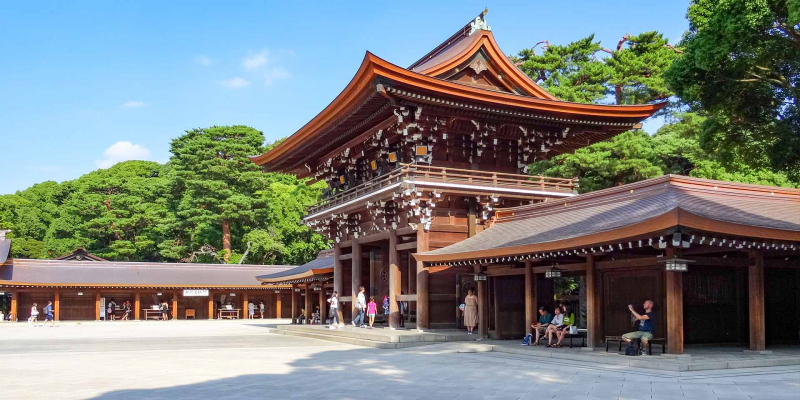Meiji Shrine
Meiji Shrine is a Shinto shrine in Shibuya, Tokyo, dedicated to Emperor Meiji and his wife, Empress Shken's deified spirits. The emperor's grave, which is located in Fushimi-momoyama, south of Kyoto, is not included in the shrine.
The Japanese Diet enacted a resolution commemorating the emperor's contribution to the Meiji Restoration after his death in 1912. The building's site was chosen as an iris garden in a Tokyo neighborhood frequented by Emperor Meiji and Empress Shken.
The temple was created in the traditional nagare-zukuri style, utilizing predominantly Japanese cypress and copper, and began construction in 1915 under It Chta. The shrine's construction was a national initiative that brought together youth clubs and other civic organizations from all around Japan to donate work and funds. Materials were sourced from every Japanese prefecture, including Karafuto, Korea, Kwantung, and Taiwan, with the major timbers coming from Kiso in Nagano and Alishan in Taiwan, which was then a Japanese colony. The building cost was expected to be $5,219,00 in 1920 (about US$26 million now), less than a fifth of the actual cost thanks to donated materials and labor.
Meiji Shrine was formally dedicated on November 3, 1920, and was completed in 1921, with the gardens completed in 1926. When it was first built, the shrine complex had an interior volume of 650 tsubo. Until 1946, the Meiji Shrine was formally designated as a Kanpei-taisha, which meant it was on the list of government-sponsored shrines.
Numerous foreign officials have visited Meiji Shrine, including US President George W. Bush, US Secretary of State Hillary Clinton, and German Foreign Minister Guido Westerwelle.
Location: 1-1, Kamizono-chō, Yoyogi, Shibuya, Tokyo 151-0053












